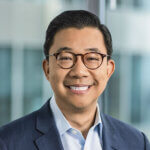Oakmark Global Fund - Investor Class
Average Annual Total Returns 12/31/12
Since Inception 08/04/99 10.30%
10-year 10.61%
5-year 1.07%
1-year 20.16%
3-month 10.32%
Gross Expense Ratio as of 09/30/12 was 1.16%
Past performance is no guarantee of future results. The performance data quoted represents past performance. Current performance may be lower or higher than the performance data quoted. The investment return and principal value vary so that an investor’s shares when redeemed may be worth more or less than the original cost. To obtain the most recent month-end performance data, view it here.
Quarter Review
With only a few exceptions, the September quarter’s broad strength in equity markets carried over to the December quarter. The United States was the most important of those exceptions, however, as investors reacted to the national election and the approach of the “fiscal cliff.” The Oakmark Global Fund gained 10% in the quarter, while the MSCI World Index returned 2%, and the Lipper Global Fund Index returned 4%. The Fund’s return for the calendar year was 20%. That contrasts to the 16% return for the MSCI World Index and the Lipper Global Fund Index’s return of 16%. As always, we are most pleased to report the Fund’s 10% compound annualized rate of return since inception, which compares to 3% for the MSCI World Index and 4% for the Lipper Global Fund Index for the same period.
The countries that contributed most to the Fund’s quarterly return were the U.S., Japan and Switzerland. Although the broad U.S. market was weak, the Fund’s comparatively concentrated portfolio of American holdings performed well. For the second consecutive quarter, the Fund did not have any countries that detracted from return. The five largest contributors to Fund return in the quarter were Daiwa Securities Group (Japan), Tenet Healthcare (U.S.), Canon (Japan), Toyota Motor (Japan) and Equifax (U.S.). The Fund holdings that detracted most were Square Enix Holdings (Japan), Intel (U.S.), Devon Energy (U.S.), Lab Corp of America (U.S.) and Apache (U.S.).
For the calendar year, the countries with the highest allocations–the U.S., Japan and Switzerland–were also the largest return contributors. Of course, this makes perfect sense in what has ended up as a strong year in most of the world. Again, given that 2012 ended so strong, no country detracted from the year’s return. Daiwa, Snap-on (U.S.), Discovery Communications (U.S.), Oracle (U.S.) and Equifax were the leading contributors. Square Enix, Rohm (Japan), Health Net (U.S.), Intel and Apache detracted most from the 12-month return.
Japan
It was an eventful quarter in Japan. The election of a new prime minister Shinzo Abe, energized the market with anticipation of macro reform. Both the Nikkei 225 and the TOPIX indexes rose 6%, respectively, for the quarter. Mr. Abe is focused on invigorating the economy and counteracting decades-long deflation by implementing aggressive quantitative easing programs and formalizing a 2-3% inflation target. He believes these significant measures are necessary to spur an increase in capital investment and avoid further negative economic growth. In response to Abe being elected, the value of the yen has already begun to weaken. Abe only took office in late December, so it’s premature to say that he will be the one to finally lead Japan to nominal GDP growth. His initial goals are encouraging, but Japan still needs to address micro reforms in order to encourage consolidation, create new businesses, improve transparency, establish better corporate governance and reduce bureaucracy.
It is important to stress that our investing approach is based on fundamental, bottom-up research, focusing on businesses and not macro trends. Having said that, the weaker yen has benefited some of our export-oriented holdings, such as Canon (+23%), Toyota (+19%) and Omron (+23%). In addition, the strong Japanese equity market boosted Daiwa (+44%), the Fund’s top performer for the quarter. Not all of our Japanese holdings enjoyed such positive performance. Square Enix (-17%) was the Fund’s worst performer for the quarter. The company revised down its full-year numbers due to worse-than-expected game launches. The gaming industry has always been driven by “hits,” and “misses” are unfortunately a part of the business, too. More broadly, the industry is cyclically weak because we are in between console launches from Microsoft, Sony and Nintendo. In addition, the move to more social and mobile gaming is disrupting the industry. We continue to believe that companies with strong content, like Square Enix, will survive and excel regardless of the hardware used to play games.
Lumpiness
The December quarter proved to be quite favorable to the Fund, and its managers would like nothing more than to bask in the quarter’s glow. Many shareholders, however, make sure that we do not fall prey to that temptation. Shareholders often ask us why we cannot construct a less volatile, more consistent return stream. Would that we could. Of course, long-time readers of reports from Oakmark managers have learned to expect this lumpiness in the pattern of returns, and they understand it is an inevitable outcome of our style of value investing. As value investors, we attempt to take advantage of the human tendency to oscillate between ebullience and pessimism. This spectrum can be seen in individual securities or in the market for an entire country (e.g., the U.S. after 9/11 or Japan after the tsunami). But the market’s ability to bring price and value together is inconsistent and erratic, and this dictates that the Fund’s return stream will experience volatility.
Although calendar 2012 proved to be a successful period for the Fund, the year was far from smooth. The quarterly return sequence was +16%, -8%, +2% and +10%. This pattern is more erratic than some years, but it is far from abnormal. It is also common for the Fund’s short-term returns to differ from those of its benchmarks because of its concentration and value orientation.
For the past five years, individual investors have relentlessly liquidated holdings of equity mutual funds. Some of this liquidation activity may be a natural outcome of the aging of the large Baby Boom generation, the oldest members of which turn 67 this week. But we suspect that much of the move away from equities stems from the fear of volatility, particularly given investors’ experiences in 2008. In our opinion, investors are better served by focusing on the very long term, at least five years. One calendar quarter is too short a time period to be anything but a curiosity, and although a year has astronomical relevance, it also is not long enough for productive investing. As noted in the first paragraph, Oakmark Global has earned a 10% compound rate of return over its 13 years, but this has included many shorter term losses. Nevertheless, investors who have been patient from inception have seen the value of their shares triple (pre-tax). We thank our Fund investors for their loyalty and persistence, especially in a lumpy year like 2012.
Portfolio Activity
Unusually for the Fund, we neither initiated any new holdings nor did we eliminate any existing positions in the quarter, meaning that changes in country allocations resulted only from rebalancing and price movements. The Fund’s largest overweight countries, when compared to the MSCI World Index, continue to be Japan, Switzerland, Germany, Spain and Italy. Because the Fund is focused and value-oriented, it does not hold positions in many countries that are part of the MSCI World Index. As we wrote last quarter, the largest underweights include the U.K., the U.S. and Canada. At 46%, the U.S. is by far the Fund’s largest country allocation, but this is still 6% below the benchmark. Until the December quarter, U.S. equities had outperformed most international markets, and we have taken advantage of this inequality to rebalance into more attractively valued international equities. As managers and investors in the Fund, we have no incentive other than to have the Fund own the most attractive equity securities, wherever they may be found.
Currency Hedges
Even after an 11% depreciation of the yen versus the U.S. dollar during the quarter, we still see it as overvalued. Abe and many other business leaders also believe the yen should continue to weaken—anticipating that an exchange rate around 90 yen to the U.S. dollar is a reasonable level for Japanese exporters to make acceptable profits. As such, we continue to have 53% of our exposure hedged. We also continue to believe that the U.S. dollar is undervalued relative to other global currencies, so approximately 56% of the Fund’s Australian dollar and 34% of the Swiss franc exposures were hedged.
Thank you for being our partners in the Oakmark Global Fund. Please feel free to contact us with your questions or comments.
As of 12/31/12, Daiwa Securities Group, Inc. represented 5.5%, Tenet Healthcare Corp. 3.0%, Canon, Inc. 3.1%, Toyota Motor Corp. 3.2%, Equifax, Inc. 2.6%, Square Enix Holdings Co., Ltd. 2.6%, Intel Corp. 2.3%, Devon Energy Corp. 1.4%, Laboratory Corp. of America Holdings 2.9%, Apache Corp. 1.5%, Snap-on, Inc. 3.9%, Discovery Communications, Inc., Class C 3.0%, Oracle Corp. 4.5%, ROHM Co., Ltd. 1.3%, Health Net, Inc. 1.8%, OMRON Corp. 2.0%, Microsoft Corp. 0%, Sony Corp. 0%, and Nintendo Co., Ltd. 0% of the Oakmark Global Fund’s total net assets. Portfolio holdings are subject to change without notice and are not intended as recommendations of individual stocks.
The MSCI World Index (Net) is a free float-adjusted market capitalization weighted index that is designed to measure the global equity market performance of developed markets. This benchmark calculates reinvested dividends net of withholding taxes using Luxembourg tax rates. This index is unmanaged and investors cannot invest directly in this index.
The Lipper Global Fund Index measures the performance of the 30 largest mutual funds that invest in securities throughout the world. This index is unmanaged and investors cannot invest directly in this index.
The Nikkei Stock Average (Nikkei 225) is a price weighted index comprised of 225 highly liquid stocks listed on the Tokyo Stock Exchange First Section; the constituents are selected by considering the weights of the industrial sectors. The index is aimed at fulfilling two objectives: to maintain its long-term continuity and to reflect changes in the industry structure. This index is unmanaged and investors cannot invest directly in this index.
The TOPIX, also known as the Tokyo Stock Price Index, is a capitalization weighted index of all companies listed on the First Section of the Tokyo Stock Exchange. The index is supplemented by the subindices of the 33 industry sectors. The index calculation excludes temporary issues and preferred stocks, and has a base value of 100 as of January 4, 1968. The index is unmanaged and investors cannot invest directly in this index.
The Fund’s portfolio tends to be invested in a relatively small number of stocks. As a result, the appreciation or depreciation of any one security held by the Fund will have a greater impact on the Fund’s net asset value than it would if the Fund invested in a larger number of securities. Although that strategy has the potential to generate attractive returns over time, it also increases the Fund’s volatility.
Investing in foreign securities presents risks that in some ways may be greater than in U.S. investments. Those risks include: currency fluctuation; different regulation, accounting standards, trading practices and levels of available information; generally higher transaction costs; and political risks.
The discussion of the Fund’s investments and investment strategy (including current investment themes, the portfolio managers’ research and investment process, and portfolio characteristics) represents the Fund’s investments and the views of the portfolio managers and Harris Associates L.P., the Fund’s investment adviser, at the time of this letter, and are subject to change without notice.




